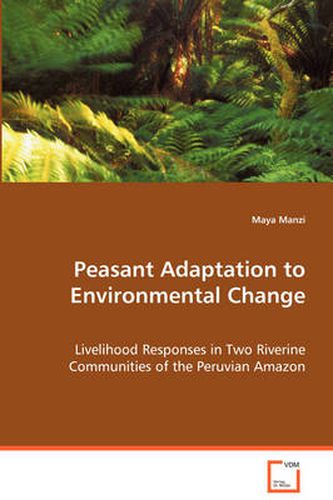Readings Newsletter
Become a Readings Member to make your shopping experience even easier.
Sign in or sign up for free!
You’re not far away from qualifying for FREE standard shipping within Australia
You’ve qualified for FREE standard shipping within Australia
The cart is loading…






This title is printed to order. This book may have been self-published. If so, we cannot guarantee the quality of the content. In the main most books will have gone through the editing process however some may not. We therefore suggest that you be aware of this before ordering this book. If in doubt check either the author or publisher’s details as we are unable to accept any returns unless they are faulty. Please contact us if you have any questions.
One of the primary challenges facing researchers and practitioners in their efforts to address issues of poverty and environment is the need to deepen our understanding of the logic that guides people’s decisions over resource use, particularly among the rural poor whose livelihoods often depend on fragile and dynamic environments. This study seeks to identify the set of factors that influences how people respond to abrupt environmental disturbances and resource scarcity through changes in livelihood and resource management practices in two riverine communities of the Peruvian Amazon. The results reveal that socioeconomic characteristics such as forest knowledge and access to agricultural land explain striking differences among households in livelihood responses to environmental change, particularly concerning resource use behavior, resilience to disturbance, and the propensity to adopt more sustainable resource management strategies. This book should be especially useful to researchers, NGOs, policy makers, and community leaders working towards - or anyone else con-cerned about - poverty alleviation and sustainable resource use in tropical humid environments.
$9.00 standard shipping within Australia
FREE standard shipping within Australia for orders over $100.00
Express & International shipping calculated at checkout
This title is printed to order. This book may have been self-published. If so, we cannot guarantee the quality of the content. In the main most books will have gone through the editing process however some may not. We therefore suggest that you be aware of this before ordering this book. If in doubt check either the author or publisher’s details as we are unable to accept any returns unless they are faulty. Please contact us if you have any questions.
One of the primary challenges facing researchers and practitioners in their efforts to address issues of poverty and environment is the need to deepen our understanding of the logic that guides people’s decisions over resource use, particularly among the rural poor whose livelihoods often depend on fragile and dynamic environments. This study seeks to identify the set of factors that influences how people respond to abrupt environmental disturbances and resource scarcity through changes in livelihood and resource management practices in two riverine communities of the Peruvian Amazon. The results reveal that socioeconomic characteristics such as forest knowledge and access to agricultural land explain striking differences among households in livelihood responses to environmental change, particularly concerning resource use behavior, resilience to disturbance, and the propensity to adopt more sustainable resource management strategies. This book should be especially useful to researchers, NGOs, policy makers, and community leaders working towards - or anyone else con-cerned about - poverty alleviation and sustainable resource use in tropical humid environments.